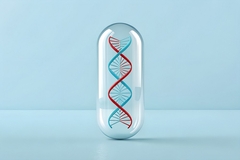UK consumers are choosing less salt
02 Feb 2005

UK Food Standards Agency reports that its campaign to cut down salt consumption is having a very positive effect.
According to the FSA, the launch of the FSA's Sid the Slug salt campaign in September 2004, the Agency's tracking research is now showing a steady increase in the number of people recognising that they might have a problem with too much salt in their diet and are now trying to cut down. The FSA reports that between August 2004 and January 2005: there has been a 32% increase in people claiming to be making a special effort to cut down on salt. Meanwhile there has been a 31% increase in those who look at labelling to find out salt content and there has been a 27% increase in those who say that salt content would affect their decision to buy a product 'all of the time.
“Consumers appear to be taking food and health messages on board. Our research shows that just four months after we launched our salt reduction campaign, more people are looking at labels for information on salt and more people are choosing to buy products with less salt in them,” Food Standards Agency Director of Consumer Choice and Dietary Health, Gill Fine, said.
“We are pleased with the response from food companies that are reducing salt in products and labelling salt as well as sodium. These steps help consumers who want to improve their health. However, there is still a lot more to be done before we hit the target of no more than 6g of salt each day for an adult by 2010,” Fine added.
The FSA writes that every day at least 26 million people in the UK eat more than the recommended maximum daily intake of 6g of salt. Men are eating the most with a daily average of 11g of salt while women consume an average of 8.1g a day. Eating too much salt is a significant risk factor in developing high blood pressure, which can lead to heart disease and stroke. Studies show that reducing salt in the diet can lower blood pressure within four weeks. Approximately 75% of salt consumed is from processed foods, 10-15% is added by consumers and 10-15% is naturally present in food.
All content and features on this website are copyrighted with all rights reserved. The full details can be found in our privacy statement
Subscribe to our newsletters
By continuing to browse our site you agree to our Privacy Statement












